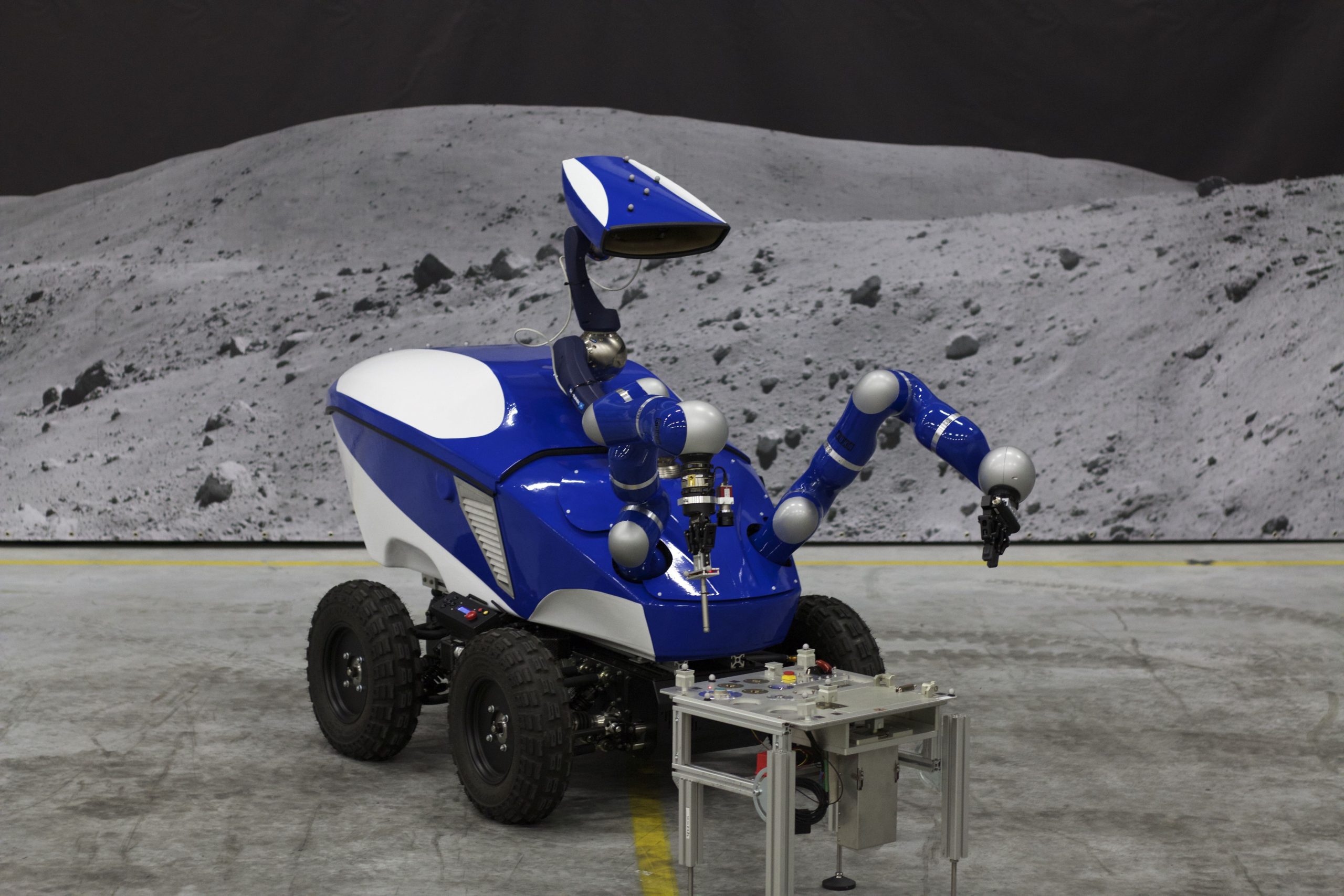On Monday, September 7. 12:00 an invisible hand from space reached out to control its robotic counterpart on earth…
Sounds like the opening sequence of a new SciFi flick? In this case, truth is actually cooler than fiction.
In the second week of September, the European Space Agency (ESA) and the TU Delft Robotics Institute tested a critical new phase in interactive robotics in space.
Danish astronaut Andreas Mogensen, who is currently at the International Space Station for the 2015 ESA Short Duration Mission, controlled the robotic hand and vehicle here on earth. The astronaut made the robot perform mechanical tasks in real-time with force-feedback. Called Interact, the space experiment was led by Dr. André Schiele, TU Delft Associate Professor and the founder of the ESA Telerobotics and Haptics Laboratory.
What did Mogensen do?
The robotic hand is part of a rover at the ESA technical centre in Noordwijk. Called the Interact Centaur, it is linked to the International Space Station using a haptic joystick. Using the joystick, Mogensen manoeuvred the rover through an obstacle course and performed a peg-in-hole operation with tight mechanical tolerance.
Sounds simple? Why is it a big deal?
“Tasks such as tying shoelaces or using a screwdriver are easy for the human brain even though they demand a high degree of precision primarily because they are tactile. For remote-controlled tasks (teleoperations), this tactility is replaced by something called haptic feedback – a virtual sense of the object being navigated. In this instance, haptic feedback allows the astronaut to physically feel whether the connector is correctly inserted and how to adjust it for a better fit,” said Schiele. It is important to note that they are also studying how microgravity environments can affect haptics. The project report states that the complete operation will be performed from on board the ISS, at approximately 400 km altitude, using a data connection via a geosynchronous satellite constellation at 36.000 km altitude.
The space-time conundrum
“The signal from the joystick with the astronaut travels approximately 90,000 kilometres from space, via the US, to Europe and into our test facility. This creates a time delay of up to 850 milliseconds. In Robotics usually a time delay of up to 2 milliseconds is tolerable, so this is quite significant,” said Schiele. In order to work around the time delay, they have set up two new control methods. The First is based on real-time monitoring the involves energies and is called Time Domain Passivity Observer and Controller (POPC) method and the second is a model mediation of the contact to the other side in space. “The astronaut will use both in different parts of the experiment” he added.
Why is this significant?
In its most immediate application, robotic hands and arms can be used to perform simple repairs in space. In the long run, this could mean robots can provide sensory feedback over massive distances. “Think of C-3PO on a landing mission,” said Schiele. These robots can be used in tasks such as cleaning up space debris or even exploratory missions to the Moon and Mars when they are on the surface, and the humans remain in orbit in space.



Comments are closed.